I was thrilled to find and photograph a male Blue-gray Gnatcatcher in spring breeding plumage yesterday at the edge of a juniper woodland in Tooele County. This is a species I hear far more often than I am able to photograph them.
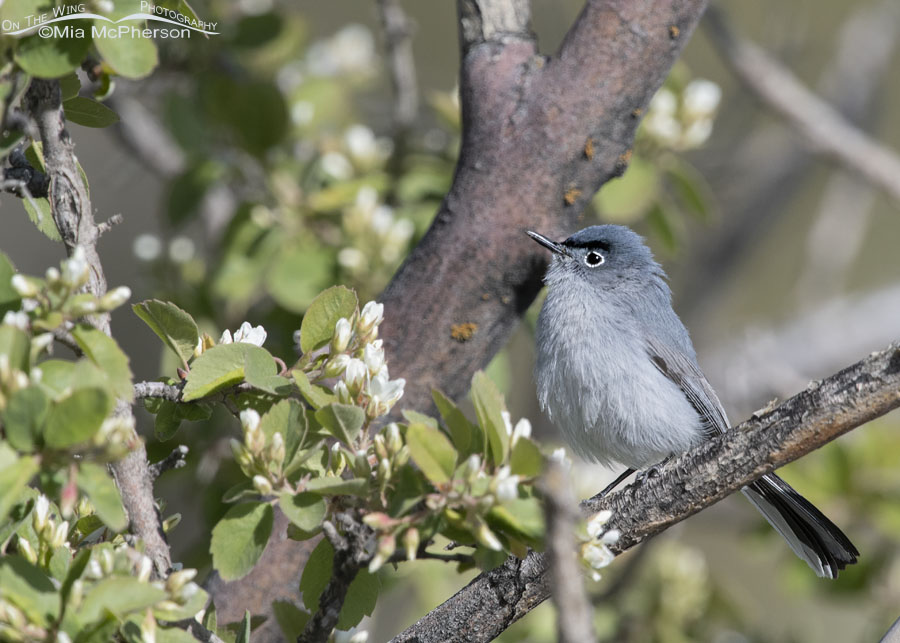 Male Blue-gray Gnatcatcher in a flowering tree – Nikon D500, f7.1, 1/1600, ISO 640, Nikkor 500mm VR with 1.4x TC, natural light
Male Blue-gray Gnatcatcher in a flowering tree – Nikon D500, f7.1, 1/1600, ISO 640, Nikkor 500mm VR with 1.4x TC, natural light
I was driving very slowly downhill on a dirt road. When I heard this male calling and singing from the trees at the edge of the road I stopped my Jeep immediately. If I hadn’t done that along with carefully listening and by paying attention I wouldn’t be sharing these Blue-gray Gnatcatcher photos today. I only had this bird in my viewfinder for one minute.
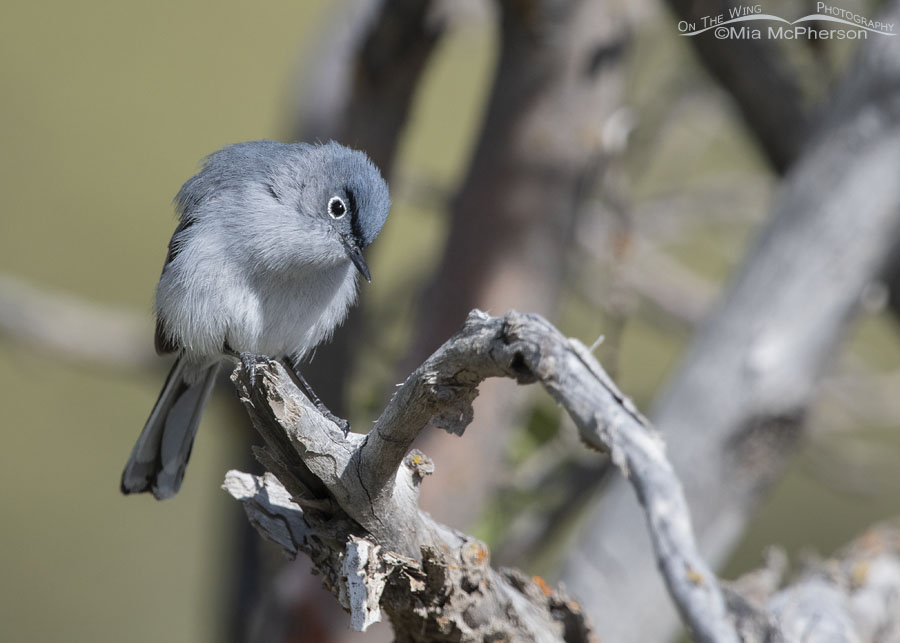 Adult male Blue-gray Gnatcatcher looking curious – Nikon D500, f7.1, 1/1600, ISO 640, Nikkor 500mm VR with 1.4x TC, natural light
Adult male Blue-gray Gnatcatcher looking curious – Nikon D500, f7.1, 1/1600, ISO 640, Nikkor 500mm VR with 1.4x TC, natural light
The male Blue-gray Gnatcatcher moved around in the trees at the edge of the road frequently. I suspect there may have been another male or even a female gnatcatcher nearby because this bird’s excited behavior.
I have challenges tracking and focusing on this species because they are tiny and fast.
This was my favorite image of the gnatcatcher from yesterday. I loved the curious look I appeared to be getting from him.
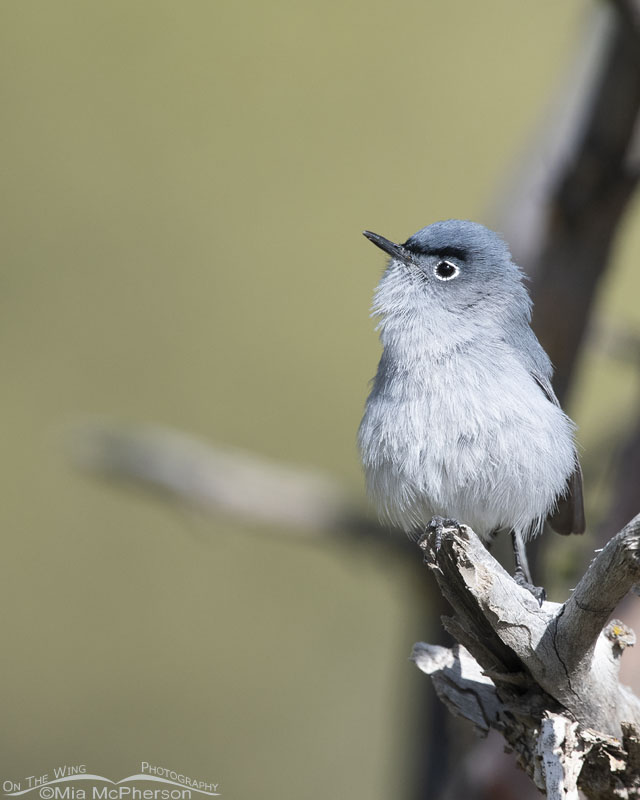 Male Blue-gray Gnatcatcher in breeding plumage – Nikon D500, f7.1, 1/1600, ISO 640, Nikkor 500mm VR with 1.4x TC, natural light
Male Blue-gray Gnatcatcher in breeding plumage – Nikon D500, f7.1, 1/1600, ISO 640, Nikkor 500mm VR with 1.4x TC, natural light
As I photographed this male Blue-gray Gnatcatcher I enjoyed listening to his wheezy calls and his songs. Blue-gray Gnatcatchers mimic the songs of other birds and are sometimes called “Little Mockingbirds” because of their mimicry.
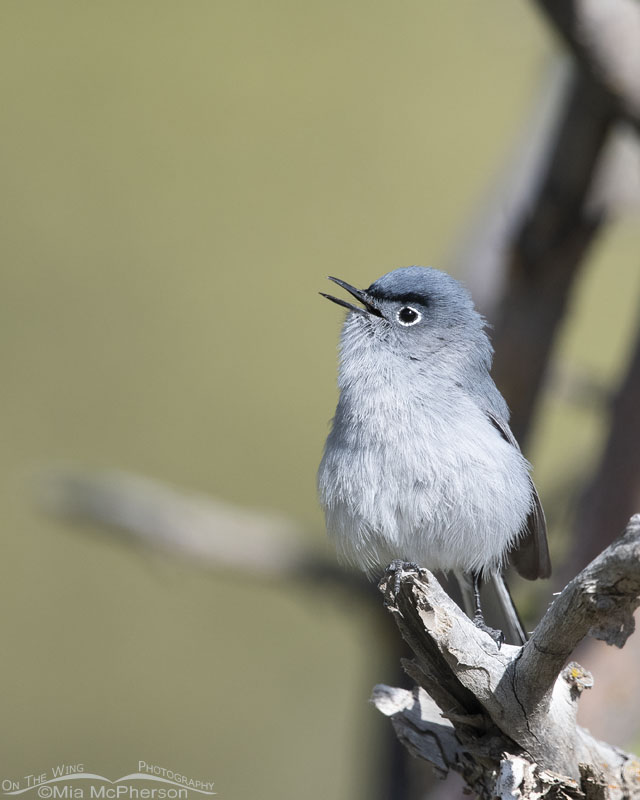 Singing Blue-gray Gnatcatcher – Nikon D500, f7.1, 1/1600, ISO 640, Nikkor 500mm VR with 1.4x TC, natural light
Singing Blue-gray Gnatcatcher – Nikon D500, f7.1, 1/1600, ISO 640, Nikkor 500mm VR with 1.4x TC, natural light
I appreciated it when for a few seconds that he sang out from the open on top of a weathered juniper stump. I had a wonderful view of the gnatcatcher.
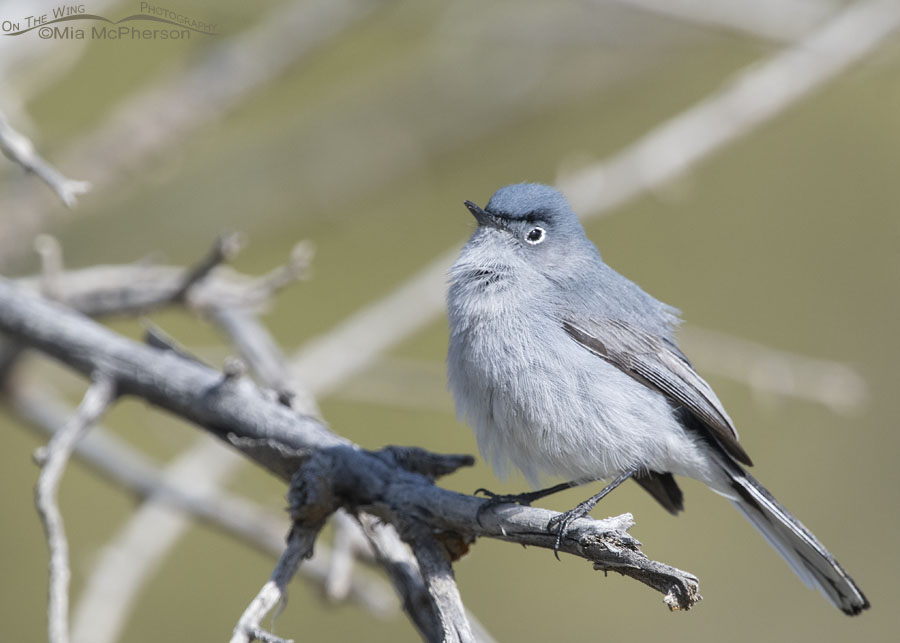 Squinting male Blue-gray Gnatcatcher – Nikon D500, f7.1, 1/1600, ISO 640, Nikkor 500mm VR with 1.4x TC, natural light
Squinting male Blue-gray Gnatcatcher – Nikon D500, f7.1, 1/1600, ISO 640, Nikkor 500mm VR with 1.4x TC, natural light
During their breeding season male Blue-gray Gnatcatchers have a black “V” on their foreheads above their eyes. I think this gives them a somewhat fierce “Uni-brow” look. This one doesn’t look nearly as fierce because he was squinting.
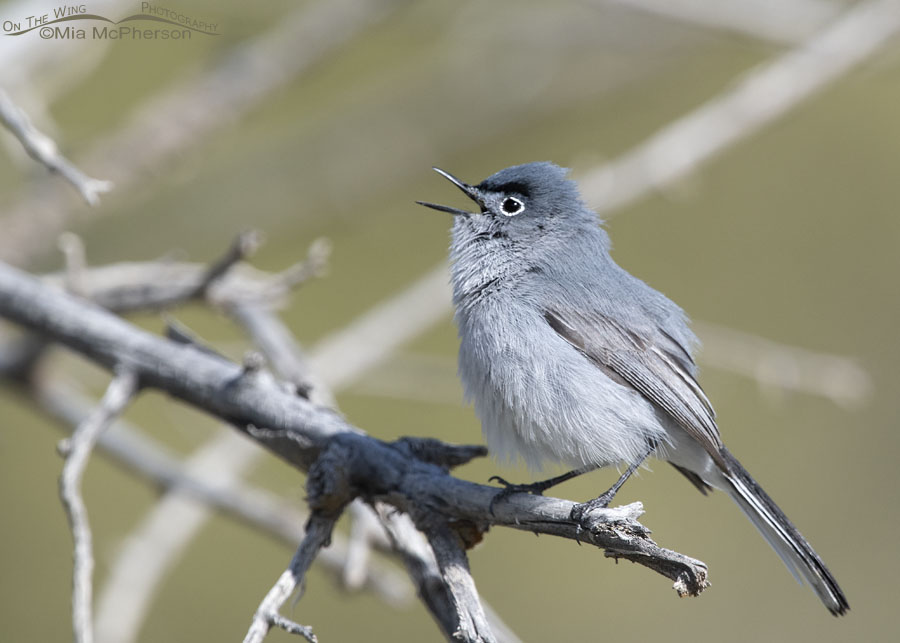 Male Blue-gray Gnatcatcher singing – Nikon D500, f7.1, 1/1600, ISO 640, Nikkor 500mm VR with 1.4x TC, natural light
Male Blue-gray Gnatcatcher singing – Nikon D500, f7.1, 1/1600, ISO 640, Nikkor 500mm VR with 1.4x TC, natural light
Having this singing male Blue-gray Gnatcatcher in my viewfinder was one of the highlights of my quiet, peaceful morning yesterday in the West Desert of Utah.
Life is good.
Mia
Click here to see more of my Blue-gray Gnatcatcher photos plus facts and information about this species.


He is beautiful, always love to see these birds.
Blue-gray is right! What a handsome bird. I also had the same “unibrow” thought that EC did — we’re on the same wavelength as usual.
Absolutely wonderful series of shots. The detail is incredible! I Love the Gnatcatchers unibrow. If Frida Kahlo was still around she would be filled with envy. Thanks Mia.
Very nice! I’ve seen one out “in the open” like that before. I can appreciate your 1/1600 sec shutter speed!
These are beautiful. I have never seen one.
He rocks the unibrow better than any human I have ever seen. Thank you for the incredibly detailed look at this little charmer.
Terrific series of really quality photographs! These little ones don’t hold still for long! “Fierce” isn’t something I think of about Gnatcatchers, but I do see what you mean. Maybe other birds would be frightened?
Great shots! I can’t imagine one staying still long enough for these beautiful photos!